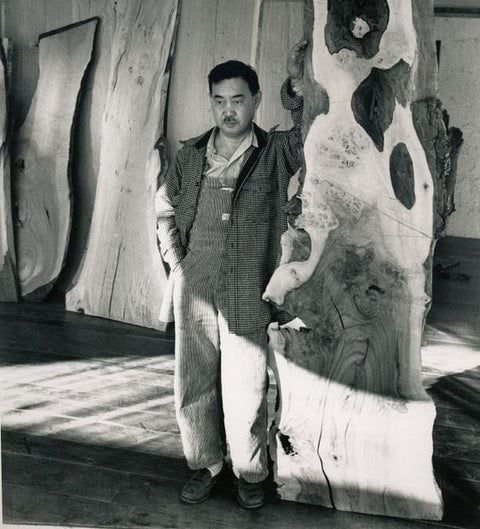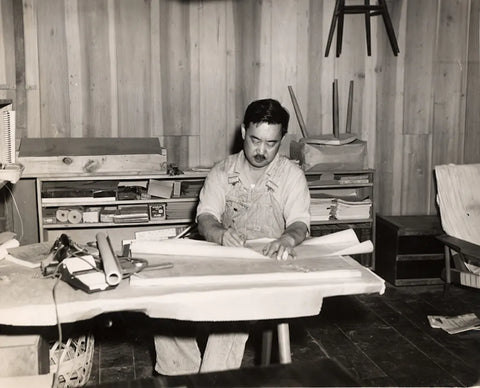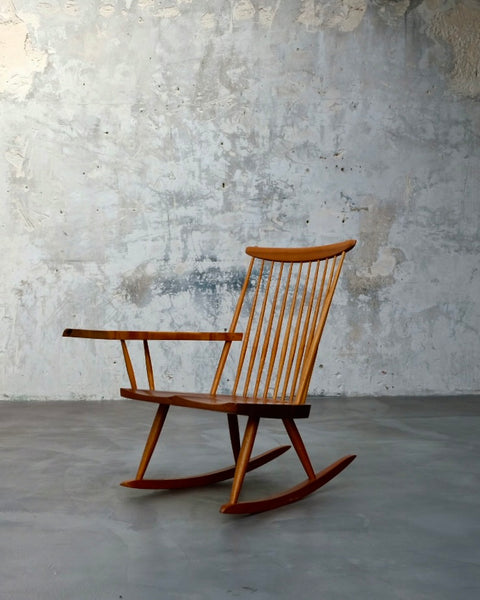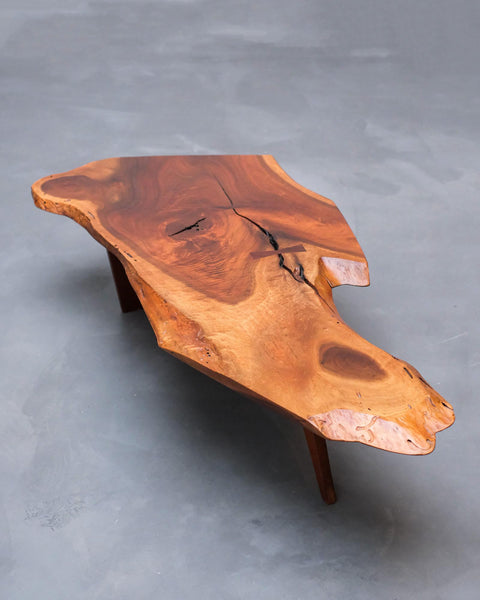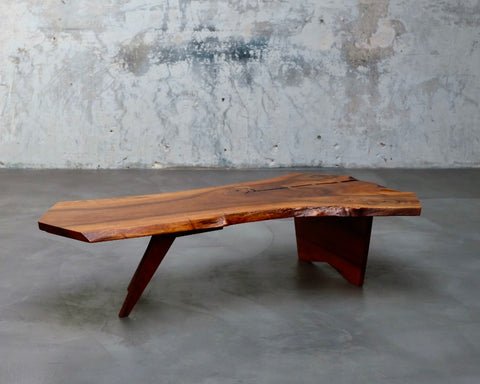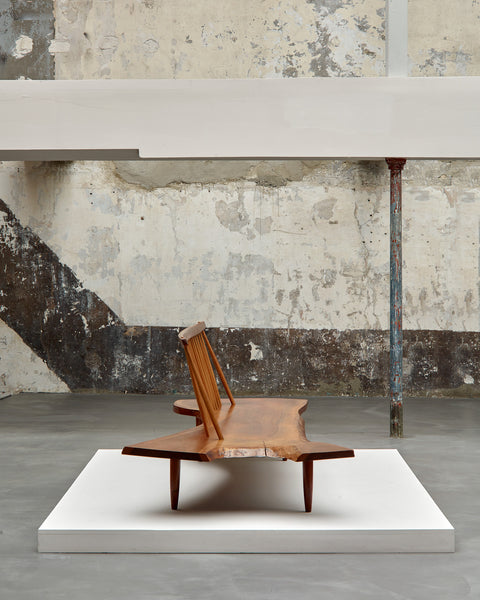George Katsutoshi Nakashima was born in 1905 in Spokane, Washington, to Katsuharu and Suzu Nakashima. Nakashima was a skilled woodworker and architect trained at M.I.T., and he played a pivotal role in the American Studio furniture movement. Unlike those who embraced industrial techniques and materials, Nakashima, along with artisans like Sam Maloof and Wendell Castle, preferred a more personal and craft-focused approach to design. What distinguishes Nakashima is the poetic essence infused in his work, his deep respect for wood, and his belief that his furniture could reveal the soul of a tree, as expressed in the title of his memoir, published in 1981.
Born to Japanese immigrants, Nakashima embarked on extensive travels after completing his education. He worked and studied in Paris, Japan, and India, assimilating influences from both modernist and traditional design at each destination. Nakashima's artistic journey took a significant turn in 1942 when he was interned in a camp for Asian-Americans in Idaho during World War II. There, he encountered a master woodcarver who mentored him in Japanese craftsmanship techniques. Nakashima's release from internment was facilitated by a former employer who brought him to the serene town of New Hope, Pennsylvania, where Nakashima established his studio and worked for the remainder of his life.
The essence of Nakashima's unique aesthetic is best captured in his handcrafted tables and benches, showcasing the natural patterns, burls, and swirls present in a wood plank. He intentionally left the "free edge" or natural contours of the slab untouched while reinforcing cracks with "butterfly" joints. Most of Nakashima's seating pieces feature meticulously milled edges. In addition to his custom work, Nakashima collaborated with larger manufacturers to create limited editions of his designs under close supervision. Knoll, for example, has been producing his Straight chair, a modern interpretation of the spindle-backed Windsor chair, since 1946.
One of Nakashima's most significant commissions came from Nelson Rockefeller in 1973 when he was tasked with creating a 200-piece suite for Rockefeller's suburban estate in New York. Today, Nakashima's furniture is sought after by both traditional collectors and trendsetters. His works are proudly displayed in prestigious institutions such as the Philadelphia Museum of Art, the Metropolitan Museum of Art in New York, and the Smithsonian Institution. They also grace the homes of notable individuals such as Steven Spielberg, Brad Pitt, Diane von Furstenberg, and the late Steve Jobs.
After passing in 1990, George Nakashima's craft and aesthetic ideology were transmitted to his daughter and long-time collaborator Mira Nakashima.

